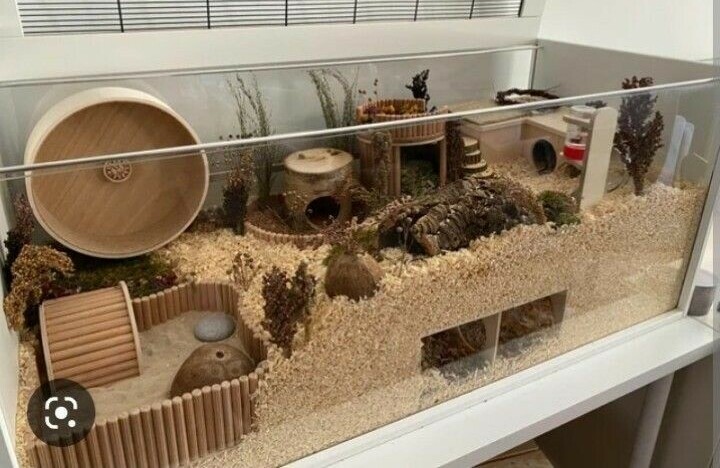
I’m going to start off with a simple truth: hamsters can be fantastic pets. They’re small, they’re cuddly, and they often fit into our busy lifestyles better than a dog or cat might. That said, choosing to bring a hamster into your home isn’t a decision you should make on a whim. You’ve got to consider whether these little creatures are the right fit for you and your family.
Hamsters offer some solid benefits as first pets. They’re relatively low-maintenance, and their enclosures can fit comfortably in a small living space. Moreover, watching them go about their daily routines – gnawing on toys, filling their cheeks with food, or running on a wheel can be downright delightful.
Now, if you’re pondering whether a hamster is the ideal pet for you, it’s not just about whether they’re cute (they definitely are). It’s also about understanding if their care requirements, nocturnal habits, and life span align with what you’re looking for in a pet. It’s pretty important to make sure your household is ready for the responsibility that comes with any pet, no matter their size.
Now what you’re going to find out about in the next part of this guide? We’re going delve into the fascinating world of hamster breeds. Each breed has its personality traits and care needs, and knowing these differences will be vital if you want to make an informed decision. Choosing the right breed will help ensure that you and your new little companion will have many happy moments together. Stay tuned as we explore the unique traits of the most common hamster breeds in the following section.
Hamster Breeds and Their Unique Traits
Did you know that not all hamsters are created equal? That’s right, there’s quite a variety out there, and each breed comes with its own set of characteristics. Let me walk you through some of the more common hamster breeds and shine a light on their unique traits so you can decide which fuzzy friend might be the right fit for your home.
Let’s start with the Syrian hamster, often known as the ‘teddy bear’ of the hamster world due to its cuddly appearance. These solitary critters prefer living alone, and their larger size makes them easier to handle, especially for kids. If you’re picturing a hamster wheel and a cozy little critter, the Syrian is your go-to.
Next up are the Dwarf hamsters, which includes a few types like the Campbell’s, the Winter White, and the Roborovski. They’re smaller, faster, and more social than their Syrian counterparts. You can even keep them in same-sex pairs or small groups, but watch out, they’re quick and can be a bit more challenging to handle.
Each breed has distinct living and handling requirements. The Syrians, for example, need more space due to their bigger size, while the Dwarfs can do well in smaller environments but they do like to have company. Remember, the breed you choose is going to have a big impact on how you set up their habitat and on your daily interaction with them.
And I’ll let you in on a little secret: the bond you’ll form with your hamster is influenced by the breed. Syrians are known for being more personable and accepting of handling, while Dwarf hamsters often prefer the company of their own kind over human interaction.
As we transition to the next section, think about what you’re looking for in a pet hamster. Do you want a loner or a social butterfly? A couch potato or an Olympian sprinter? Your answers will guide you through setting up a habitat that ensures a safe, comfortable, and stimulating environment for your new little buddy.
Setting Up the Perfect Habitat for Your Hamster
Now that you’ve decided on a hamster breed that resonates with you, you’re going to find out about how to create an environment that’s both safe and stimulating for your new pet. A proper habitat is crucial for your hamster’s well-being, so it’s important to get this right.
First up, let’s talk about cages. The size of the cage is paramount. Hamsters need ample space to roam, play, and explore. A small cage might be cheaper, but it’s not going to cut it for your furry friend. Choose a cage that’s at least 450 square inches of floor space. And remember, bigger is always better. Wire cages can provide great ventilation, but make sure the bar spacing is narrow enough to prevent escapes. Alternately, aquariums or bin cages offer a good escape-proof option, but they require more strategic ventilation.
The layout within the cage should include several areas: a cozy nest for sleeping, a place to eat, an exercise wheel, and a section for burrowing. Bedding made of paper or aspen shavings is your best bet, as it’s absorbent and safe for your hamster. Keep away from cedar or pine shavings, as these can harm your pet’s respiratory system.
To quench your hamster’s natural curiosity, include tunnels, platforms, and chew toys. Hamsters love to climb and need to gnaw to keep their teeth in check, so providing these types of items will help cover those needs. Avoid plastic tubes and accessories that could be too small for your hamster, as they can lead to dangerous situations.
Lastly, maintain a clean home for your hamster. Regular cleaning prevents the buildup of harmful bacteria and keeps your pet healthy. This is going to include spot cleaning daily and a full clean weekly, replacing old bedding with fresh material.
Remember, a happy hamster is one that has room to play and plenty of activities to engage with. Take your time in setting up a habitat that is comfortable, secure, and fun for your hamster and you’ll lay the foundation for a healthy, long-lasting companionship.
Care and Commitment: Maintaining a Healthy Relationship With Your Hamster
Now, caring for your hamster involves a bit more than just providing a nice cage and tasty food. You’re going to find out about the nuances of hamster care that, if done right, lead to a happy pet and a delighted owner.
Firstly, understand your hamster’s needs. This is about recognizing the signs of stress, the importance of exercise, and the need for a consistent routine. Hamsters are creatures of habit, and they thrive when their daily schedule of feeding, playtime, and rest is predictable.
Don’t worry too much about illness at the first sneeze, but pay attention to their health. If you notice changes in behavior, eating, or fur condition, it might be time for a checkup. Regular visits to a vet with experience in small pets can catch issues early on.
If you want to bond with your hamster, start by giving them time to adjust to their new home and handle them gently. Remember, sudden movements or loud noises can be scary for these little guys. Approach bonding as a gradual process; it’s about establishing trust, allowing your pet to become comfortable with you at their own pace.
Choose something that resonates with your personal style when it comes to play and interaction. Do you love crafting? Consider building play structures. Are you a night owl? Spend quiet time with your hamster during their active hours. The goal is to ensure engagement and enrichment for your pet.
In my opinion, creating a lasting bond with your hamster is incredibly rewarding. It requires patience, understanding, and care, but it’s worth every moment when you see your hamster content and thriving under your guardianship.
I really hope that you embrace the journey of hamster ownership with enthusiasm and love. Your first attempt at caring for a hamster doesn’t need to be perfect – it’s a learning curve, and you can always adjust your approach down the road.
Remember, a well-cared-for hamster can be a wonderful companion. So my question to you today is, are you ready to meet the challenge? Because guess what? You’ve got this.

3 replies on “Choosing The Right Hamster: A Beginner’s Guide”
I really enjoyed your guide on choosing the right hamster! It was super informative and easy to follow. I loved how you broke down the different types of hamsters and their unique characteristics—especially the part about Syrian hamsters being great for beginners due to their friendly nature. The section on habitat and care tips was also very helpful, making it clear what essentials to get before bringing a hamster home.
I do have a couple of questions, though. How do you recommend handling a hamster that seems a bit nervous or skittish at first? And are there any specific toys or activities you find most beneficial for keeping a hamster happy and healthy? Thanks for such a fantastic and detailed guide—it’s definitely given me confidence as I start my hamster journey!
Thank you for your comment, those are very good questions I will definately answer those in a new artikel that will be released soon
Hey Bob,
I made a new topic about handling shy or fearfull hamsters, you can find it here https://hamsterharmony.com/handling-a-shy-or-fearful-hamster/
Love to hear your feedback.